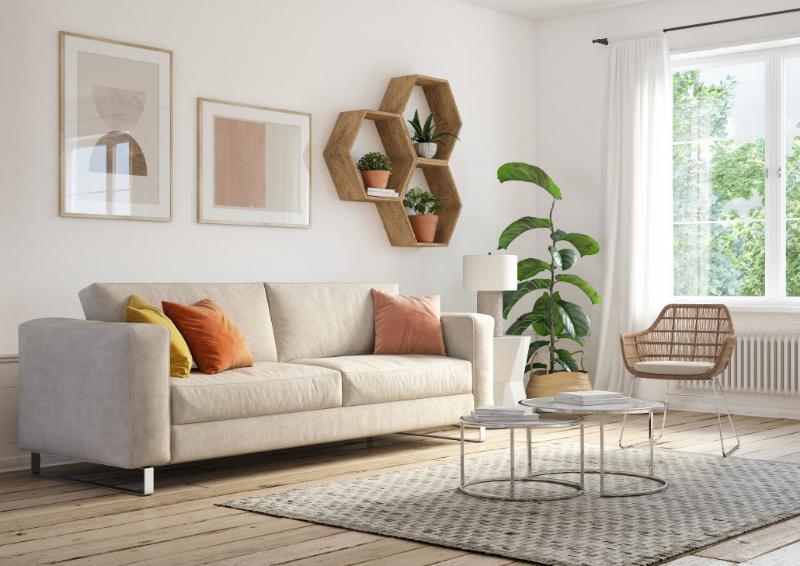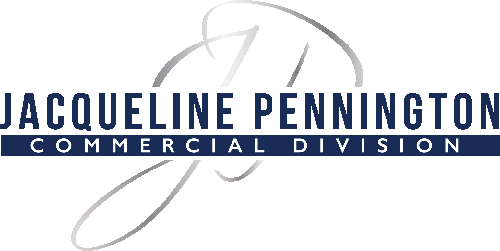
A happy family inspects their future home—thorough evaluations like this are essential when viewing new homes for sale in Cobourg, Ontario.
As a real estate agent who has spent years helping clients find their perfect homes, I can confidently say that Cobourg, Ontario is one of the most desirable places to buy a property. Nestled along the scenic shores of Lake Ontario, Cobourg offers an ideal balance of small-town charm and top-quality amenities. With its beautiful beaches, historic downtown, strong sense of community, and convenient access to Toronto, Cobourg attracts a wide range of buyers—whether seeking a primary residence, a vacation retreat, or a smart investment opportunity.
That said, even in a market as attractive as Cobourg’s, a home purchase demands careful consideration. I always emphasize to my clients the importance of a thorough home viewing process. It’s easy to fall in love with a property’s curb appeal or interior staging, but a closer, systematic evaluation can uncover potential issues that may impact your decision or your budget down the road.
This is why I have created this practical guide. In this post, I will walk you through a detailed checklist of what to look for when viewing homes in Cobourg. My goal is to help you assess each property’s condition accurately, evaluate its future potential, and make well-informed, confident decisions.
Let’s explore the essential steps together to ensure your next home in Cobourg is truly the right fit for you.
Table of Contents:
- PREPARING FOR HOME VIEWINGS
- CURB APPEAL AND EXTERIOR INSPECTION
- INTERIOR CHECKLIST: ROOM-BY-ROOM EVALUATION
- PLUMBING, ELECTRICAL, AND HVAC SYSTEMS
- STRUCTURAL AND MAINTENANCE CONSIDERATIONS
- RED FLAGS TO WATCH OUT FOR
- EVALUATING THE HOME’S POTENTIAL
- FINAL STEPS BEFORE MAKING AN OFFER
- MAKING A CONFIDENT HOME PURCHASE IN COBOURG
PREPARING FOR HOME VIEWINGS
Before we even step through the front door of a potential new home in Cobourg, it’s critical to lay the right groundwork. Proper preparation can make the difference between a rushed, overwhelming experience and a focused, productive evaluation. Here’s how I guide my clients in getting ready for successful home viewings.
Researching the Cobourg real estate market and setting a budget
The first step is gaining a solid understanding of the Cobourg real estate market. I always recommend that my clients review recent listings, compare property prices, and identify trends such as average time on market and typical offer conditions. This research provides realistic expectations about what types of homes fall within various price ranges and helps them prioritize must-have features versus nice-to-haves.
Once we understand the market, it’s crucial to set a firm, comfortable budget. I work with my clients to establish a price ceiling that factors in not only the purchase price but also closing costs, taxes, insurance, and potential renovation expenses. This financial clarity allows us to focus only on Cobourg properties that are viable options.
Getting pre-approved for a mortgage
A critical next step is obtaining a mortgage pre-approval. With Canada’s strict mortgage stress test and lending guidelines, obtaining a mortgage pre-approval helps buyers understand exactly how much they can borrow based on current qualifying interest rates. I always advise clients to complete this early, as it strengthens their position when making an offer and ensures we view homes within an achievable price range.
Pre-approval gives a clear understanding of monthly payment obligations and helps prevent falling in love with a home that’s beyond financial reach.
Bringing essential tools to every viewing
Every homebuyer should come prepared with a small toolkit to make the most out of each viewing. Here’s what I recommend bringing:
-
Notepad and pen: To jot down notes about each property, especially details that aren’t captured in listing descriptions.
-
Camera or smartphone: To take photos and videos for later comparison and to help jog your memory after seeing multiple homes.
-
Tape measure: To quickly check room dimensions, ensuring furniture or renovation plans will work.
-
Flashlight: To inspect darker areas like basements, crawl spaces, and attics where lighting may be poor.
-
Printed checklist: A structured home viewing checklist keeps you organized, ensuring no critical feature or flaw goes unnoticed.
Attending open houses and scheduling private showings
In Cobourg’s competitive market, it’s wise to take advantage of both open houses and private showings. Open houses offer a low-pressure environment to view multiple homes, get a feel for the neighborhood, and gauge the level of buyer interest.
Whenever possible, I recommend private showings, as they offer a more in-depth and personalized experience. These appointments give us time and space to ask detailed questions, evaluate the property thoroughly, and consider how it truly fits your needs without the distractions of a crowded open house.
By preparing thoroughly before each home viewing, we position ourselves to make smart, confident decisions and ensure no important detail is overlooked on the path to finding your perfect home in Cobourg.
CURB APPEAL AND EXTERIOR INSPECTION

Strong curb appeal and a well-maintained exterior—key elements to inspect when evaluating a home’s value and first impression during a Cobourg viewing.
When viewing a home in Cobourg, the first impression is more than just emotional—it often reveals the level of care and maintenance the property has received over the years. As a real estate agent, I always guide my clients to pay close attention to the exterior before even stepping inside. Here’s what I focus on during the initial walkthrough.
General first impressions
First, I take a few moments to step back and assess the overall look of the property and the surrounding neighborhood.
Does the home blend well with its neighbors? Is the street clean, quiet, and well-maintained? A property’s curb appeal can significantly influence future resale value, and a well-kept neighborhood often signals a strong, engaged community—something particularly important here in Cobourg, where community pride is high.
Exterior structure
Next, I recommend a careful inspection of the exterior structure, starting from the top:
-
Roof condition: Look for missing or curling shingles, sagging areas, and signs of moss or algae, which could indicate aging or poor maintenance.
-
Gutters and downspouts: Check whether gutters are securely attached and free of debris. Poor drainage can lead to foundation issues.
-
Siding and paint: Examine the siding material for cracks, warping, or peeling paint. Water stains or soft spots could signal deeper structural problems.
-
Foundation: Walk around the base of the house to look for foundation cracks, bulges, or evidence of previous repairs. Small hairline cracks can be normal, but large or horizontal cracks may indicate serious structural concerns that require professional evaluation.
Landscaping and lot
The landscaping provides more than just aesthetic value; it can also impact the property’s functionality and maintenance needs:
-
Yard maintenance: Well-maintained lawns, trees, and shrubs suggest responsible ownership.
-
Drainage: Watch for areas where water pools near the foundation or in the yard—poor drainage can lead to costly repairs.
-
Outdoor living potential: Consider the lot size and layout. Is there room for a deck, patio, or garden? Outdoor spaces are highly desirable in Cobourg, particularly given the region’s beautiful summers.
Parking and accessibility
Finally, it’s important to assess parking and accessibility, which can sometimes be overlooked during home tours:
-
Driveway condition: Check for large cracks, potholes, or significant slopes that could pose challenges, especially in winter months.
-
Garage space: Ensure the garage fits modern needs, not just for parking but also for storage or workspace if desired.
-
Ease of access: Evaluate how easily you and your guests can enter and exit the property. This includes pathways, steps, and proximity to public roads or amenities.
INTERIOR CHECKLIST: ROOM-BY-ROOM EVALUATION

A bright, well-maintained living area. Inspect floors, walls, natural light, and layout during your room-by-room interior evaluation in a Cobourg home.
After a thorough exterior inspection, the next critical step during a Cobourg home viewing is a systematic evaluation of the interior. A focused approach not only helps identify potential issues but also makes it easier to compare multiple Cobourg properties objectively.
Living room and common areas
The living room and other common spaces are the heart of a home, so they deserve close attention:
-
Floor condition: I recommend examining the flooring for signs of wear, water damage, creaking, or uneven surfaces.
-
Walls and ceilings: Check for cracks, stains, or patches that might indicate previous water leaks or structural problems.
-
Natural light: Observe the quality and quantity of natural light. Bright, well-lit spaces tend to feel more inviting and can improve energy efficiency.
Kitchen
The kitchen is often considered the most important room in the house, especially in Cobourg’s family-friendly communities:
-
Appliance functionality: Test built-in appliances like the oven, stove, dishwasher, and fridge to ensure they are working properly.
-
Cabinet quality: Open and close cabinets and drawers to check for smooth operation and sturdiness.
-
Counter space: Assess whether there is adequate workspace for your cooking and entertaining needs.
-
Plumbing: Look under the sink for signs of leaks, water damage, or mold, and check the faucet’s water pressure and temperature.
Bathrooms
Bathrooms can be costly to renovate, so I always encourage a detailed inspection:
-
Water pressure: Turn on faucets and showers to ensure strong, consistent pressure.
-
Toilet function: Flush each toilet to check for proper operation, leaks at the base, or signs of slow refilling.
-
Signs of mold: Look around the tub, shower, and under sinks for visible mold or musty smells.
-
Caulking and grout: Check for cracking, gaps, or mildew, which can lead to water infiltration.
-
Fixture quality: Evaluate the condition of sinks, toilets, tubs, and showers, both visually and through testing.
Bedrooms
When inspecting bedrooms, functionality and comfort are key:
-
Adequate space: Make sure there is enough room for necessary furniture without overcrowding.
-
Closet size: Open closets to assess their size, shelving, and potential for organization.
-
Window condition: Inspect windows for ease of operation, drafts, and signs of condensation or rot.
Basement and attic
The basement and attic often reveal the true health of a home:
-
Signs of moisture: Look for damp spots, musty odors, or a dehumidifier running. These can indicate ongoing moisture issues.
-
Insulation quality: In the attic, check insulation coverage and thickness to gauge energy efficiency.
-
Potential storage: Evaluate how much usable space is available for storage or future renovation possibilities.
Laundry room
Finally, inspect the laundry area and pay close attention to the following:
-
Hookups: Confirm there are proper water, gas, or electrical hookups for laundry machines.
-
Ventilation: Good airflow is crucial to prevent mold and ensure appliance efficiency.
-
Space for appliances: Check if there is adequate space for a washer, dryer, and any additional storage needs.
PLUMBING, ELECTRICAL, AND HVAC SYSTEMS
When viewing a home in Cobourg, it’s essential to go beyond appearances and assess the mechanical systems that impact comfort, safety, and cost of ownership.
Plumbing
I always check under sinks for leaks, corrosion, or water damage. Turning on faucets helps assess water pressure, while signs of moisture near toilets, tubs, or water heaters could point to plumbing issues that may require repair.
Electrical
Make sure each room has enough outlets, and look out for older or damaged wiring. Request to see the breaker panel—a clean, well-labeled box is a good sign, while an outdated or overloaded one may indicate problems.
Heating and cooling
Ask about the furnace’s age and whether it’s been maintained. I test the thermostat and check that vents are clean and airflow is strong. In Cobourg’s climate, efficient HVAC systems are crucial for year-round comfort.
STRUCTURAL AND MAINTENANCE CONSIDERATIONS
It’s always important to pay attention to signs of structural health and long-term upkeep. These often-overlooked details can reveal how well a home has been maintained and what expenses may lie ahead.
Walls, ceilings, and floors
Start by scanning each room for cracks, water stains, or discoloration, which could indicate past leaks or foundation issues. Uneven or sagging floors might point to structural movement or moisture problems beneath the surface.
Doors and windows
Open and close every door and window. They should move smoothly, latch securely, and be free of drafts. I also check for condensation between panes, which may suggest poor insulation or failing seals.
Storage and closets
Evaluate the home’s storage solutions, including built-in cabinets, closets, and shelving. In Cobourg homes, where older layouts can be charming but tight, well-planned organizational space is a practical asset.
Safety features
Finally, confirm the presence and working condition of key safety features:
-
Smoke detectors
-
Carbon monoxide alarms
-
Home security systems (if available)
These elements not only protect your family but also influence insurance costs and peace of mind.
RED FLAGS TO WATCH OUT FOR
While a home may appear move-in ready at first glance, I always encourage my clients to stay alert for subtle warning signs that could indicate deeper issues. During a Cobourg home viewing, these are the key red flags I help buyers watch out for:
Water damage and mold
Look for stains on ceilings or walls, warped flooring, or a musty smell are all possible signs of past or ongoing water damage. Mold, especially in basements or bathrooms, can pose serious health risks and may require costly remediation.
Pest infestations
Keep an eye out for droppings, chewed wires, or holes in baseboards or walls. These may suggest the presence of rodents or insects. Even subtle signs of critters can signal larger infestation issues.
Strong odors or air fresheners
A home that’s heavily scented with air fresheners or candles might be masking underlying problems like mildew, pet odors, or smoke damage. A clean home should smell neutral.
Fresh paint or new carpet in select areas
While updates are usually a plus, selective renovations, such as a freshly painted ceiling or a new carpet in one room, could be concealing water stains, pet damage, or past leaks.
Structural concerns
Be cautious if you notice foundation cracks, sloping floors, or doors that won’t close properly. These signs can indicate settling issues or structural movement, which may require a professional assessment.
Spotting these red flags early can save you from future surprises and allow for better negotiations, or a smart decision to walk away.
EVALUATING THE HOME’S POTENTIAL
When walking through a home in Cobourg, it’s important not just to focus on what’s visible today, but also on what the property could become. A thoughtful eye toward potential helps ensure the purchase is both practical and forward-thinking.
Possible renovations or updates
Many Cobourg properties have hidden value waiting to be unlocked. I recommend imagining how simple improvements, like refreshing the kitchen, opening up a wall, or finishing the basement, could enhance both function and appeal. Even small upgrades can make a big difference in livability and resale value.
Value appreciation
Cobourg continues to grow as more buyers discover its unique blend of lifestyle and location. Homes close to schools, transit, or the waterfront tend to appreciate steadily. I often research recent sales and upcoming developments in the area to get a sense of how the home might perform as an investment over time.
Future lifestyle compatibility
It’s also important to think long-term. Will the space adapt to a growing family, the need for a home office, or aging-in-place requirements? A home that can evolve with life’s changes often proves to be the smartest purchase.
Looking at a home through this lens—beyond aesthetic and into future potential—can help make a more confident and rewarding decision.
FINAL STEPS BEFORE MAKING AN OFFER
After a thorough viewing, it’s important to take a step back and make sure no detail has been overlooked. Before moving forward with an offer on a home in Cobourg, here are the final steps I recommend to ensure you’re making a well-informed decision.
Taking a second look
If there’s strong interest in a property, schedule a second visit. The first tour is often emotional; the second allows for a more analytical review. This is a chance to recheck key areas, bring a trusted companion, or even view the home at a different time of day to see how lighting, noise, or traffic may vary.
Comparing other homes
Before committing, take time to compare the home with others you’ve seen. How does it measure up in terms of condition, location, layout, and price? Sometimes, stepping back provides the clarity needed to distinguish between a great find and a compromise.
Professional consultation
Before making an offer, I strongly advise consulting with both a real estate agent and a home inspector. A licensed inspector can identify hidden issues, while a knowledgeable agent provides local insight, negotiation strategy, and market data to guide the offer process effectively.
MAKING A CONFIDENT HOME PURCHASE IN COBOURG
Buying a home in Cobourg is a major decision, and a thoughtful, room-by-room evaluation can make all the difference. From curb appeal and structural integrity to mechanical systems and long-term potential, every detail matters when considering new homes for sale in Cobourg.
I always recommend taking your time during viewings, asking the right questions, and revisiting promising properties. A thorough approach leads to better choices and ultimately, the right home.
I’m Jacqueline Pennington, your trusted Realtor in Cobourg, Ontario, here to guide you every step of the way. Have questions or ready to explore available listings? Call me at 905.375.0062 or send me an email. I’d love to help you find your perfect place.


